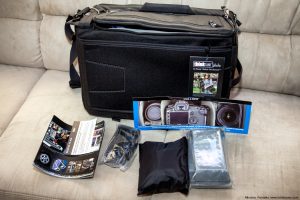Think Tank Sling-o-matic review
I added a review of the bag I’m currently using quite some time ago, but I updated it recently, so if you missed it, you can find it as all my other reviews on the Reviews page, or you can directly view it here.
Evening at the Arc de Triomphe
This is one of those color combinations I hate. Yellow lights shining on a yellow building. I think I spend more time with tweaking the yellow color, than I did with blending and editing this photo. And I still don’t like it. Could be that I just don’t know how I would like it to be.
This is a manual blend from 5 exposures, created in Photoshop.
















